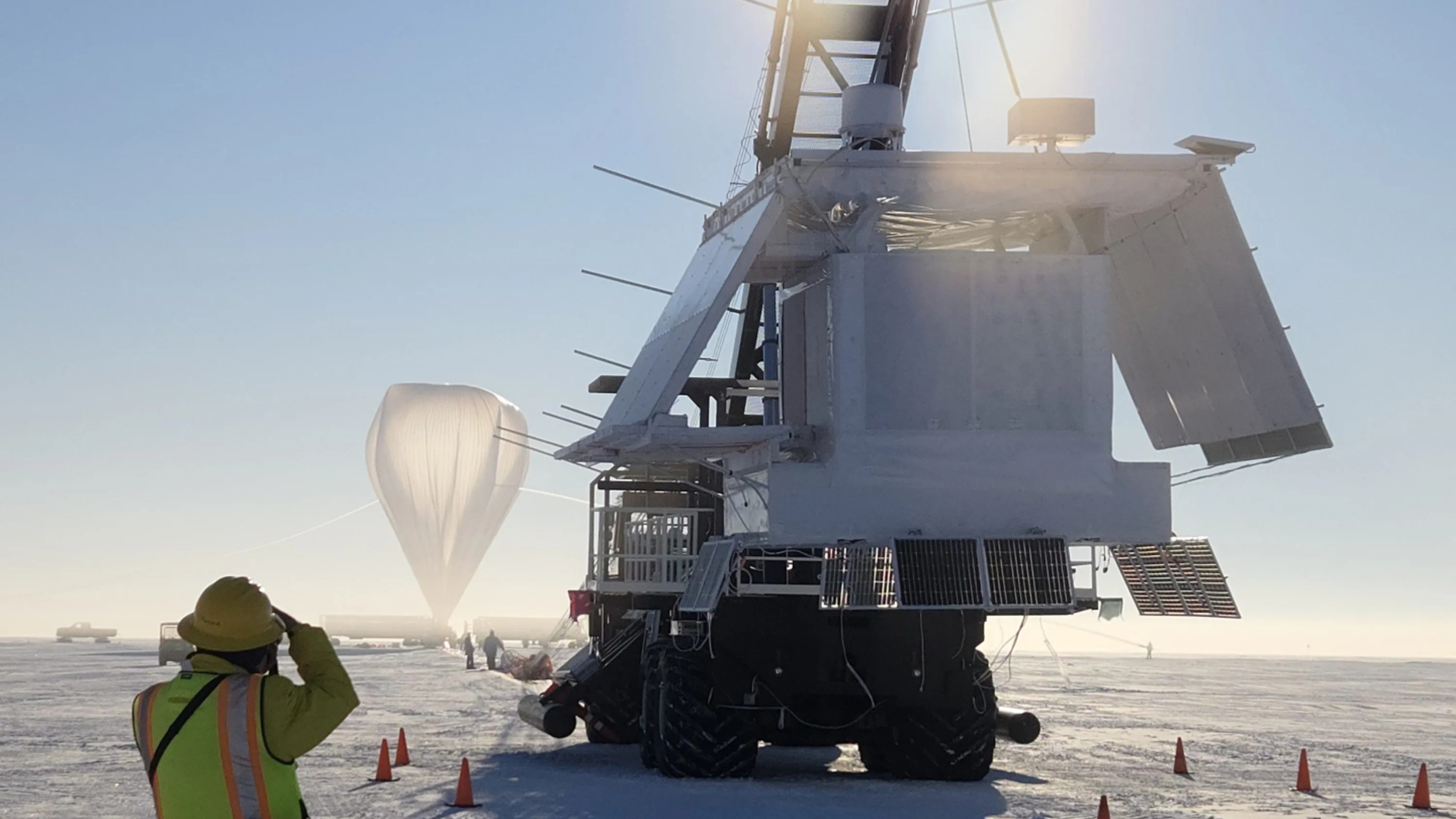Soyuz Rocket: Russia's Venerable Booster

The Soyuz rocket – not to be confused with the Soyuz spacecraft – is a line of Russian boosters that have seen variants fly since the mid-1960s. It is used for both cargo and astronaut transportation.
The Soyuz rocket was the main form of transportation to the International Space Station between 2011 and 2020. NASA bought astronaut seats on Soyuz spacecraft (which the rocket carries into space), after the space shuttle program retired. Now that commercial spacecraft have safely reached the space station carrying US astronauts, NASA is unlikely to purchase any further seats on Soyuz rockets.
Read more: How Soyuz safety features saved its passengers after a rocket failure
Another variant of the Soyuz rocket carries cargo to the ISS via regular Progress flights, which take place every few months.
Description
Soyuz is one of the oldest rocket lines still in service, with its first launch dating to Nov. 28, 1966. Soyuz's heritage comes from the Vostok launcher that took the first Soviet astronauts into space in the early 1960s. It also has a legacy from the R-7a intercontinental ballistic missile, which conducted a couple of dozen test missions in the 1960s.
There are multiple variants of the Soyuz rocket, and the line has evolved many times over its history. Some current examples include the Soyuz-2.1a that is designed for ISS cargo, the Soyuz-FG that is designed to ferry astronauts to the ISS and the Soyuz-FG/Fregat that a European-Russian company called Starsem uses for commercial operations.
Most Soyuz rockets use RP-1 (a kerosene-based fuel) and liquid oxygen as propellant, although a variant known as the Soyuz-U2 used liquid oxygen and an RP-1 variant known as Syntin. The height, payload capacity and other characteristics of Soyuz depend on what variant is being used. Russia does not have a lot of easily accessible information available about different variants of the rocket, making it difficult to compare the types in terms of their payloads and physical dimensions.
Breaking space news, the latest updates on rocket launches, skywatching events and more!
Notable launches
The long heritage of Soyuz — some sources estimate it has flown over 1,700 times — makes it probably the world's longest-lived rocket line. It has had relatively few failures in hundreds of launches, making it an extremely reliable type of rocket. The history of the Soyuz line includes many dozens of crewed flights in support of the Salyut and Mir space station program, as well as the ISS. It also is a proven supplier of cargo to the ISS, with only a few failures across dozens of flights there.
While the vast majority of launches are successful, there have been a handful of failures during the rocket's long history. Notably, the human missions Soyuz 1 and Soyuz 11, which killed four astronauts between them, were both launched aboard Soyuz rockets. However, both of these missions failed due to problems during re-entry, not launch, so the rocket was not implicated in the disasters.
Here are some examples of Soyuz rocket failures from the last 20 years.
On Oct. 5, 2002, a Soyuz U exploded catastrophically 29 seconds after liftoff, during the launch of a Photon-M satellite. The European Space Agency says a ground crew member was killed, and eight people injured.
On June 21, 2005, a Soyuz rocket (carrying a Molniya military communications satellite) abruptly terminated its flight after six minutes. The second and third stages of the rocket, along with the satellite, crashed into the ground in Siberia.
On Aug. 24, 2011, an uncrewed Soyuz crashed during a planned cargo flight to the International Space Station. Later that year, on Dec. 23, a Soyuz-21.b failed in its mission to launch a Meridian-5 military communications satellite, due to a problem in the third stage.
On April 28, 2015, a Progress 59 supply ship to the ISS began spinning out of control shortly after its Soyuz-U launched it into orbit. The ship eventually burned up in Earth's atmosphere, cargo undelivered.
On Nov. 28, 2017, nineteen satellites riding aboard a Soyuz rocket could not be reached. However, the fault lay more with the main satellite's programming than with the rocket. The following January, Russian Deputy Prime Minister Dmitry Rogozin told Russian state television that the satellite was programmed with co-ordinates from a launch from the Baikonur Cosmodrome in Kazakhstan, east of Russia. However, the satellite actually launched from a new launchpad called Vostochny, in eastern Russia.
A Soyuz rocket suffered an anomaly in booster separation on Oct. 11, 2018, shortly after launching the Soyuz MS-10 spacecraft carrying NASA astronaut Nick Hague and Russian cosmonaut Alexey Ovchinin toward the International Space Station. The MS-10 made an emergency landing back on Earth, and both Hague and Ovchinin are safe.
Read more: Full Space.com coverage of the 2018 Soyuz failure
After the 2018 launch failure, Russia committed to three robotic, or uncrewed, launches before attempting to send any more crew to space.
Additional resource
- European Space Agency: Soyuz Launch Vehicles
- Space.com: Astronaut Nick Hague on what it felt like inside a rocket launch failure
- The Guardian: Why this "workhorse spaceship" is still going strong
This article was updated on Jan. 27, 2021 by Space.com Reference Editor Vicky Stein

Elizabeth Howell (she/her), Ph.D., was a staff writer in the spaceflight channel between 2022 and 2024 specializing in Canadian space news. She was contributing writer for Space.com for 10 years from 2012 to 2024. Elizabeth's reporting includes multiple exclusives with the White House, leading world coverage about a lost-and-found space tomato on the International Space Station, witnessing five human spaceflight launches on two continents, flying parabolic, working inside a spacesuit, and participating in a simulated Mars mission. Her latest book, "Why Am I Taller?" (ECW Press, 2022) is co-written with astronaut Dave Williams.
